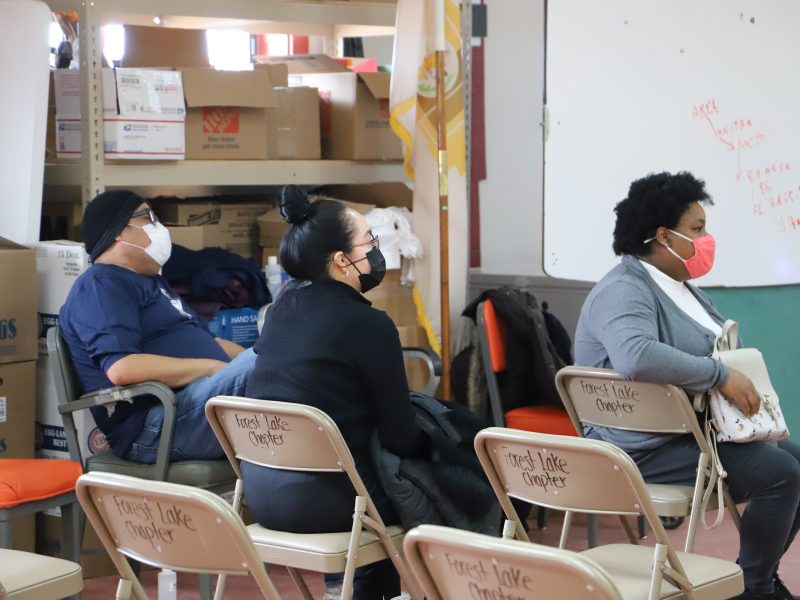Working together
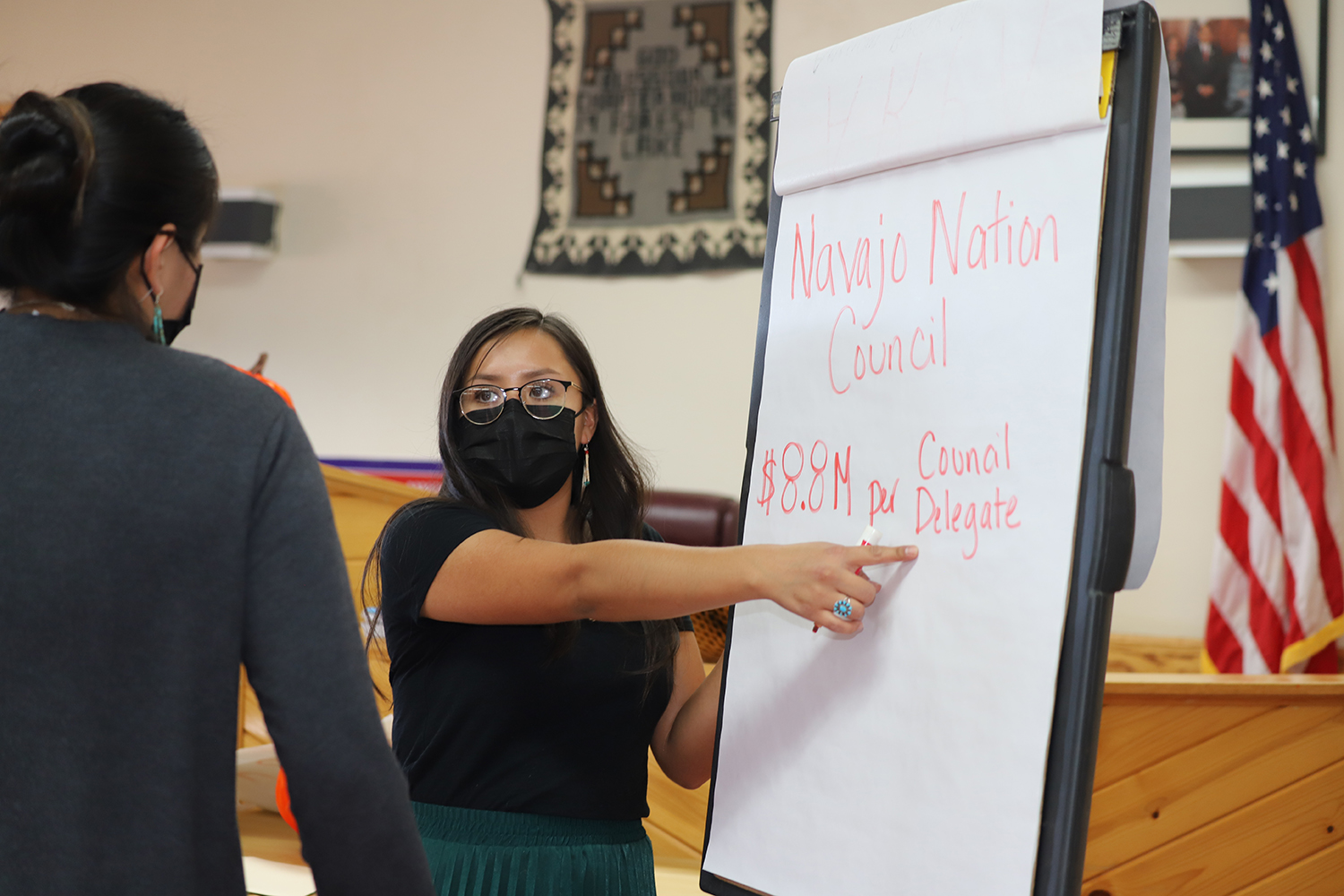
Navajo community partners with MPH students on service-learning survey
How can you build a stronger Navajo Nation chapter post-pandemic?
Improving the Navajo Nation Forest Lake Chapter’s healthy living infrastructure has been a top priority in the wake of the COVID-19 pandemic for chapter house leaders.
For Mae-Gilene Begay, president of Navajo Nation Forest Lake Chapter governance in Pinon, Arizona, the answer came in partnering with Northern Arizona University Master of Public Health students in a multiyear service-learning project where, together, they developed a community needs assessment survey, administered the survey to community members, entered and analyzed the data and created a report that Begay could use to advocate for resources and services when applying for grants and other funding opportunities.
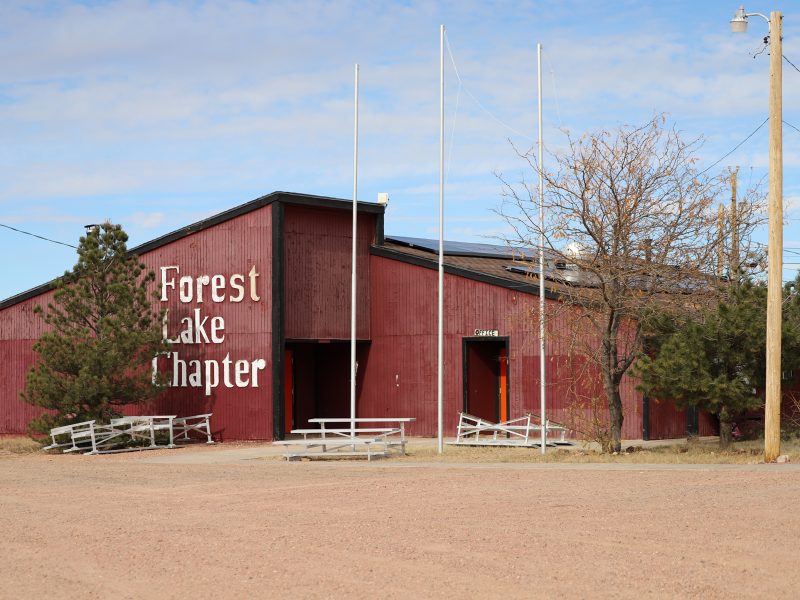
Navajo Nation structure
The Navajo Nation is organized into five governance agencies or areas; each agency contains chapters, which are the local form of government. There are 110 local chapters, each with their own chapter house and a Navajo Nation Council delegate or president. Members of each chapter typically meet in a chapter house where they can express their opinions to their delegate who then advises the Navajo Nation Council on the needs and wishes of their region.
Service learning is a form of community-centered, experiential education that places emerging health professionals in community-generated service projects and provides structured opportunities for reflection on the social, economic, and political contexts of health. Through guided reflection on academic readings and service, students link their service experience to broader systems-level thinking, enhance cultural humility, and increase their civic engagement.
Using collaboration and innovation to assist a community
In 2021, Begay had recently retired as the program director at Navajo Nation Community Health Representatives (CHR) Outreach Program where she had worked for 22 years. She knew it was important to carefully document chapter members’ needs and to discover what would help them to flourish and thrive intergenerationally.
“The survey project came about with my earlier work as a program director with Drs. Nicolette Teufel-Shone and Samantha Sabo,” Begay said. “We did some Navajo CHR program projects and we would always do pre- and post-testing to determine the learning of my staff and how it could be improved.”
“After my retirement from the Navajo Nation, and realizing my local chapter governance had very limited data, I reached out to Drs. Teufel-Shone and Sabo with my desire to collect data for the Forest Lake Chapter,” Begay added.
For Teufel-Shone, associate director of NAU’s Center for Health Equity Research (CHER) and professor in the NAU Department of Health Sciences and CHER, and Sabo, associate professor in health sciences and CHER, service-learning projects have always been an integral part of their coursework. Both have published and trained faculty on this approach, which is linked to increasing civic engagement of students and a lifelong commitment to positive social change. An example of earlier work includes their 2015 publication in the American Journal of Public Health, “Service Learning: A Vehicle for Building Health Equity and Eliminating Health Disparities.”
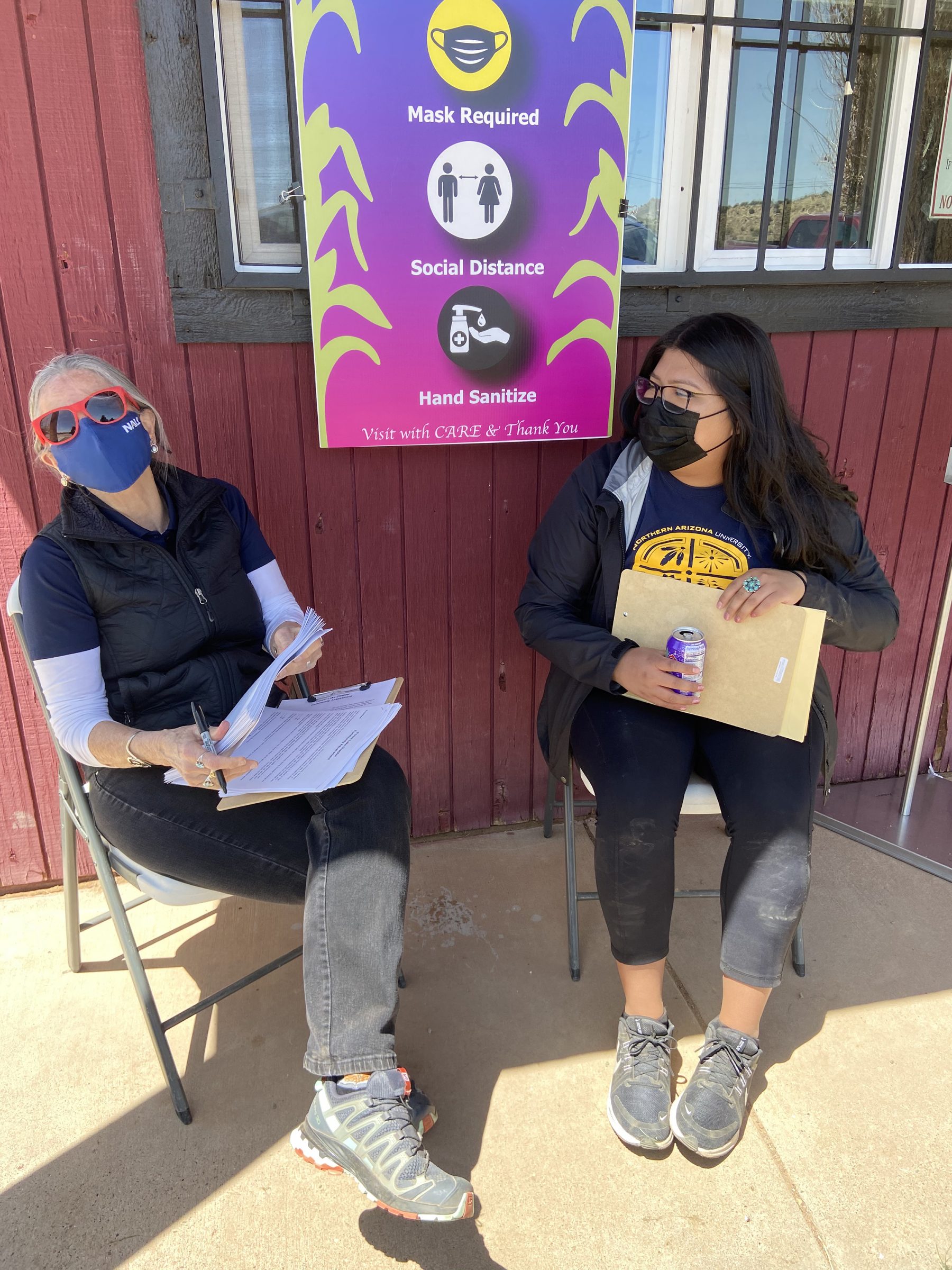
Teufel-Shone is a strong proponent of community-based learning, and she has dozens of photos of her students, from classes through the years, working with communities––learning how to make tortillas, butchering sheep, and serving in a variety of community events. Sabo has developed several weeklong, intensive service-learning courses to address community-identified issues in urban maternal and child health, rural health and U.S.-Mexico border health.
“As students are immersed in service-learning projects and working in the social, cultural and geographic environments of an unserved community, they become acutely aware of the strengths and challenges of the setting. For example, they can witness the critical importance of social support and family in a resource-poor environment. They experience the challenges of traveling long distances on rough roads, particularly if their own vehicle gets stuck in the mud or has a flat tire. You cannot teach that much-needed level of understanding in the classroom.”
Teaching students to develop an effective survey

In fall 2021, as part of Sabo’s community-based participatory research to improve health equity course, Sabo and Begay created a service-learning project which started with Begay visiting NAU and providing a presentation to Sabo’s class with an overview of the Forest Lake community, and the chapter president identified the necessity for a community needs assessment.
“Mae-Gilene’s request for a public health assessment was a perfect opportunity for my students to put into practice all that they had been learning during their program,” Sabo said. “The chance to work directly with the Forest Lake Chapter leadership in navigating the project and presenting the assessment for feedback from Tribal leaders gave them real experience in what they hope to be doing in the future as public health professionals and leaders.”
Sabo’s public health students worked with Begay to develop a household survey to assess their community’s needs, got chapter approval, then went door-to-door with chapter members and collected 45 surveys. Sabo and NAU doctoral student Rebecca Annorbah developed the database.
The survey covered household members’ age, education, health, employment, and income. Questions assessed community members’ access to water, electricity, sewage treatment and internet, and asked members about ideas for community resources, including cultural and traditional knowledge which was either held by community members or that members wanted to see offered at the Forest Lake Chapter House.
“Preservation and promotion of cultural and traditional knowledge and practices are core to achieving health equity. It was awesome to learn from Mae-Gilene and other traditional knowledge holders what could be shared more broadly,” said Sabo.
That summer, the work continued. Sabo mentored an undergraduate public health student working with the Partnership for Native American Cancer Prevention who entered data and developed community flyers as a summer project. Begay collected an additional 30 survey responses that were added to the rest of the surveys.
Service learning in practice
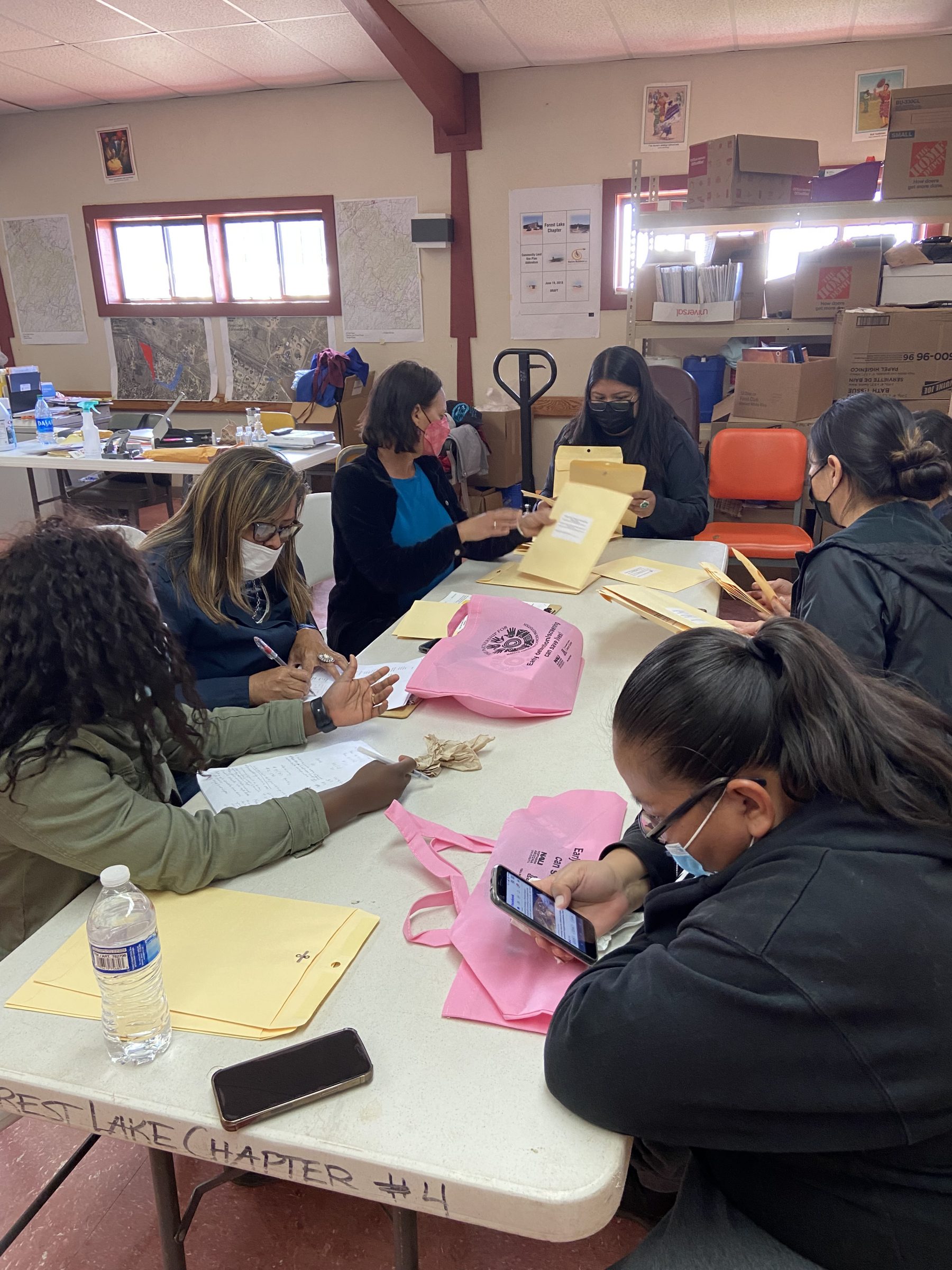
Master of Public Health students Jayme Biakeddy and Jennifer Hudson, both members of the Navajo Nation, worked on the full project through both classes.
“Overall, this was a great learning experience to discover the importance of community-based participatory research,” Hudson said.
Biakeddy and Hudson developed a presentation and report for the Forest Lake Community that they presented at the Forest Lake Chapter House, located about three hours from NAU, during a chapter meeting shortly before Thanksgiving this year. At the meeting, the chapter celebrated the holiday with a complete holiday meal, and about 50 members attended the hour-long presentation.
According to Biakeddy, it was important to deliver the final Forest Lake Community Needs Assessment to the community in person to continue building a trust relationship with them.
“I would hope the community would learn about the importance of collaboration between community and academic partners,” Biakeddy said.
She said she also hoped the community would feel that their involvement throughout the assessment process was appreciated and valued and that the experience would enable both partners to support one another in beneficial ways.
“It is important for academic partners to listen and understand the ‘insider community perspective’ to fully comprehend how to assist the community,” Biakeddy said.
Begay said she was surprised that the students came to the meeting almost four hours early to help the chapter set up chairs, decorate and assist in the kitchen for its community Thanksgiving dinner. Hudson brought homemade blue corn muffins to serve to community elders.
“While they were waiting for a quorum to start the community meeting, the students were rehearsing their PowerPoint presentation and they were all helping each other to improve their weaknesses,” Begay said. “I saw this as an immense commitment from Dr. Teufel-Shone’s students. At the end, they developed a good rapport with the community members.”
Hudson said that during the presentation, she felt like the students had the undivided attention of community members while they were “eating their delicious meal.” She said it was helpful that she and Biakeddy had visited the community once before and were familiar with some of the meeting attendees.
“Mae-Gilene [Begay] was a huge help in creating a welcoming space for us to present and in providing the community a background of us and our presentation in the Navajo language,” Hudson said. Begay said that the Forest Lake Chapter community knows that the NAU public health students are experts in their field.
“The students performed well sharing their skills and knowledge with the community members, it was with such awe the students conversed well and truly respected their audience,” Begay said. “They make certain that the guidance and work I had requested were in order through periodic check-ins with me.”
She said that the students inspired community members by how genuine and respectful they were in communicating with people of all ages.
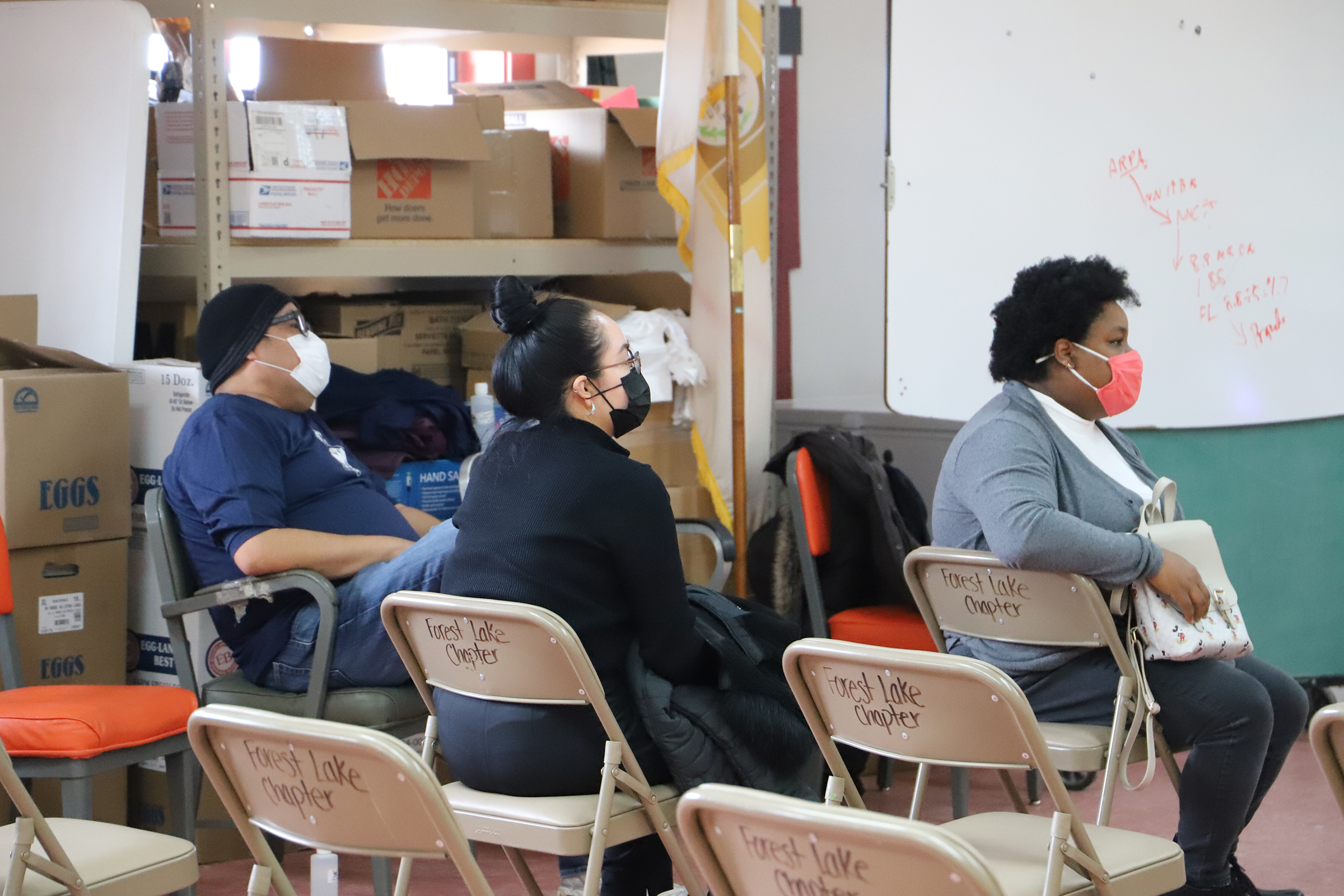
“The community members knew the students were working with Drs. Teufel-Shone and Sabo at NAU and gave them immense credit for analyzing the results of the surveys,” Begay said.
Biakeddy said that community engagement experience was important to her learning, specifically in comprehending the significance of building relationships between academic and community partners.
“It is vital to be aware of the research process and to involve the community throughout this process and address how to sustain these relationships that are built,” Biakeddy said. “Once I graduate from the Master of Public Health program, I hope to gain work experience in helping and engaging with local Native American communities in addressing health disparities that are currently being endured. I hope to address these health issues through community-based interventions and programs.”
Hudson said that she thinks more classes should incorporate a service-learning project to help students learn about the communities that surround them outside of campus.
“It can provide a lot of interesting perspectives that you may not have known or experienced before,” she said.
Hudson said she also hopes to continue her career in research, especially community-based research.
“I would like to help my tribe (Navajo) and other Indigenous tribes live longer, healthier, and happier lives,” Hudson said.
